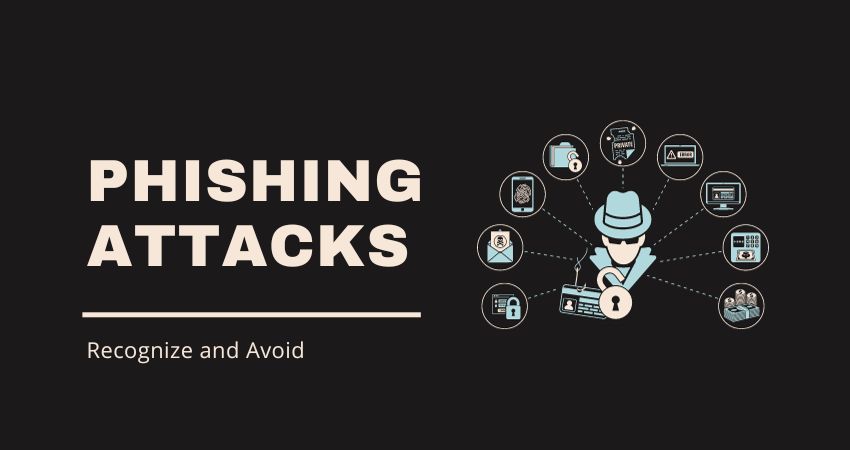Table of Contents
Introduction
Phishing attacks are a persistent menace in the digital landscape, targeting individuals and organizations alike. In this comprehensive guide, we’ll delve into the intricate world of phishing attacks, exploring their modus operandi and, most importantly, how you can effectively recognize and steer clear of these treacherous traps.
Understanding Phishing Attacks
What is Phishing?
At its core, phishing is a malicious cyber activity, skillfully designed to deceive and defraud. These attacks are geared towards coaxing individuals into divulging sensitive information, such as login credentials, personal data, or financial details, typically for nefarious purposes. Let’s peel back the layers to better understand these deceptive ploys.
How Do Phishing Attacks Work?
Phishing attacks unfold with a well-crafted script:
Bait Creation: Crafty cybercriminals create lures, often in the form of convincingly disguised emails or messages, designed to draw in their unsuspecting prey.
Delivery: These lures are then dispatched to potential victims through various communication channels, ranging from email and SMS to social media.
Deception: The messages are artfully crafted to mimic the appearance of trustworthy entities, often featuring logos, branding, and language that mirrors legitimate organizations.
Action: Recipients are cajoled into taking a specific action, such as clicking on a link or downloading an attachment.
Information Capture: When individuals comply, their confidential information is cunningly captured by the attacker.
The success of phishing attacks hinges on the manipulation of human psychology, exploiting emotions and trust.
Recognizing Phishing Attempts
Common Phishing Red Flags
Detecting phishing attempts begins with honing your radar for these telltale signs:
Suspicious Sender Email Addresses: Scrutinize sender email addresses for irregularities or misspellings.
Generic and Poorly Written Messages: Phishing emails often exhibit a lack of personalization and poor grammar.
Mismatched URLs and Domain Names: Hovering over links can reveal their actual destination; be cautious if it doesn’t align with what’s claimed.
Urgent and Threatening Language: Beware of messages that attempt to incite panic or demand immediate action.
Unexpected Attachments and Hyperlinks: Avoid opening attachments or clicking on links from unknown or unexpected sources.
Social Engineering Techniques
Phishing attacks master the art of social engineering to manipulate recipients:
Emotional Manipulation: Attackers play on emotions like fear, curiosity, or excitement to elicit compliance.
Impersonation of Trusted Entities: Phishers impersonate reputable institutions, like banks or government agencies, to gain victims’ trust.
Creating Urgency: Messages often convey an imminent need for action to prevent negative consequences.
Fostering Fear of Missing Out (FOMO): Some phishing messages create a fear of missing out on limited-time offers or vital information.
Utilizing Security Tools
Boost your defense against phishing by making smart use of security tools:
Email Filters and Spam Detectors: Enable robust email filtering to reroute phishing emails to your spam folder.
Browser Security Plugins and Extensions: Consider browser extensions that can alert you to potentially harmful websites.
Antivirus Software: Install trusted antivirus software to spot phishing attempts and malware.
Multi-Factor Authentication (MFA): Add an extra layer of security by enabling MFA wherever possible.
Avoiding Phishing Attacks
Email Safety
Shield yourself from email-based phishing attacks with these precautions:
Verify the Sender’s Authenticity: Double-check sender addresses, especially in unsolicited emails.
Avoid Clicking on Suspicious Links: Hover over links to preview URLs before clicking, and never download attachments from unfamiliar sources.
Use Email Encryption: Safeguard sensitive information by encrypting emails when sharing.
Report Phishing Attempts: Be proactive; report suspicious emails to your email provider to protect others.
Safe Browsing Habits
Practice safe online browsing:
Manually Type URLs: Instead of clicking links, manually enter website addresses in your browser.
Use a Password Manager: Password managers can help thwart password-related scams.
Keep Software Updated: Ensure your browser and security software are regularly updated to patch vulnerabilities.
Exercise Caution with Personal Information: Be discerning when sharing personal or financial information online.
Educating Yourself and Others
Knowledge is a formidable defense against phishing:
Importance of Awareness Training: Equip yourself with insights into common phishing tactics and techniques.
Teaching Others: Extend this knowledge to friends and family, empowering them to protect themselves from phishing threats.
Corporate Phishing Simulations: In corporate environments, consider conducting phishing simulations to heighten employee awareness.
Stay Informed: Stay abreast of the latest phishing trends and tactics to stay one step ahead of cybercriminals.
Responding to Phishing Attacks
What to Do if You Suspect a Phishing Attempt
Should you suspect a phishing attempt:
Don’t Panic: Maintain your composure and avoid impulsive reactions.
Do Not Engage: Steer clear of responding to or interacting with any elements in the suspicious message.
Report the Phishing Attempt: Promptly notify your organization’s IT department or your email provider.
Change Your Passwords: If you’ve shared login credentials, change your passwords without delay.
Recovering from a Phishing Attack
In the event of a phishing attack:
Regain Control: Reclaim ownership of your compromised accounts by changing passwords and securing your information.
Update Security Settings: Review and reinforce your account security settings.
Monitor Financial Accounts: Vigilantly monitor your financial accounts for any irregular or suspicious activity.
Learn from the Experience: Transform the incident into a learning opportunity to bolster your defenses against future attacks.
Conclusion
Phishing attacks remain an enduring threat in our increasingly digital world. The ability to recognize and avert these scams is paramount for safeguarding your personal information and financial assets. By staying informed, adopting prudent online practices, and educating yourself and others, you can significantly reduce the risk of falling prey to phishing attacks. Stay vigilant, and remember that prevention is the most potent weapon against these cunning cyber threats.
Read More Articles
Cyber Hygiene: A Daily Routine for Online Safety
Cyber Security in the Workplace: Best Practices
The Ultimate Guide to Cyber Security Essentials
Don’t Be a Victim: Protect Your Online Privacy
Passwords Are Dead: Alternatives for Strong Security

